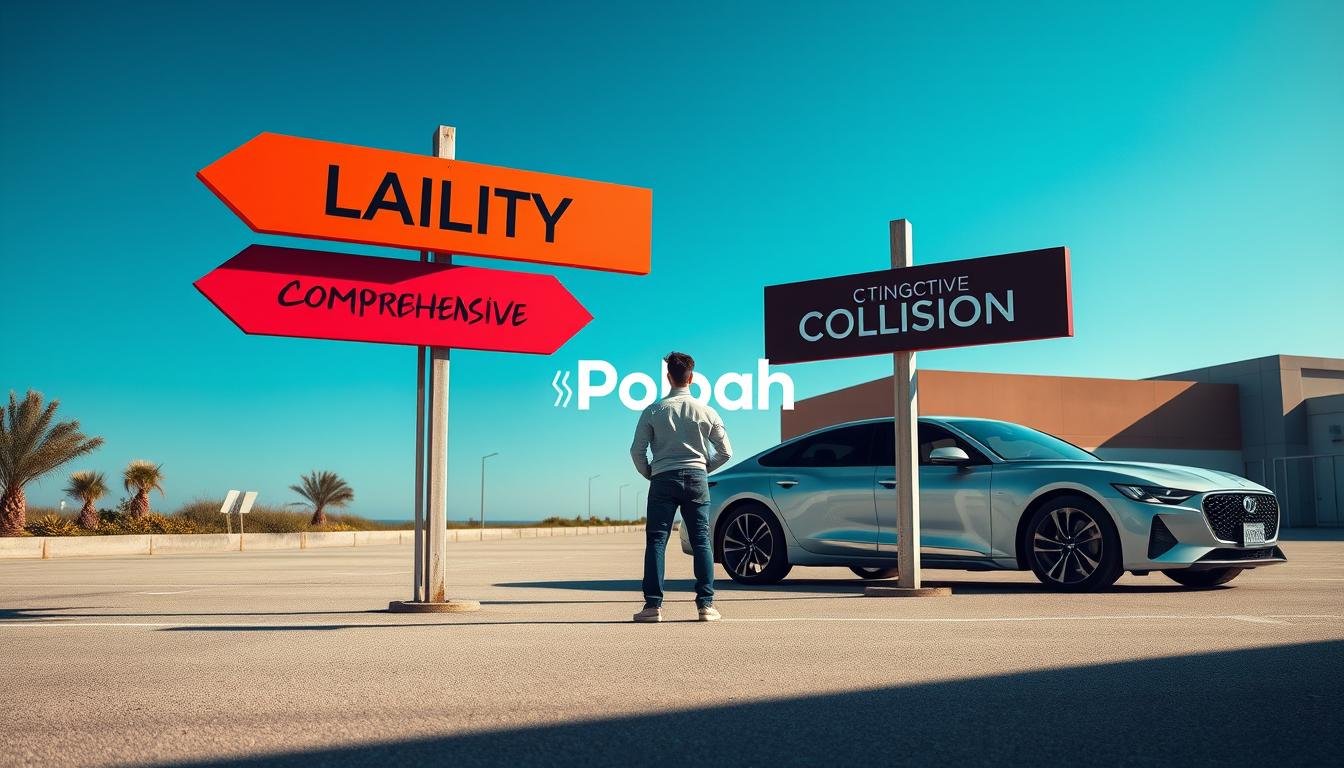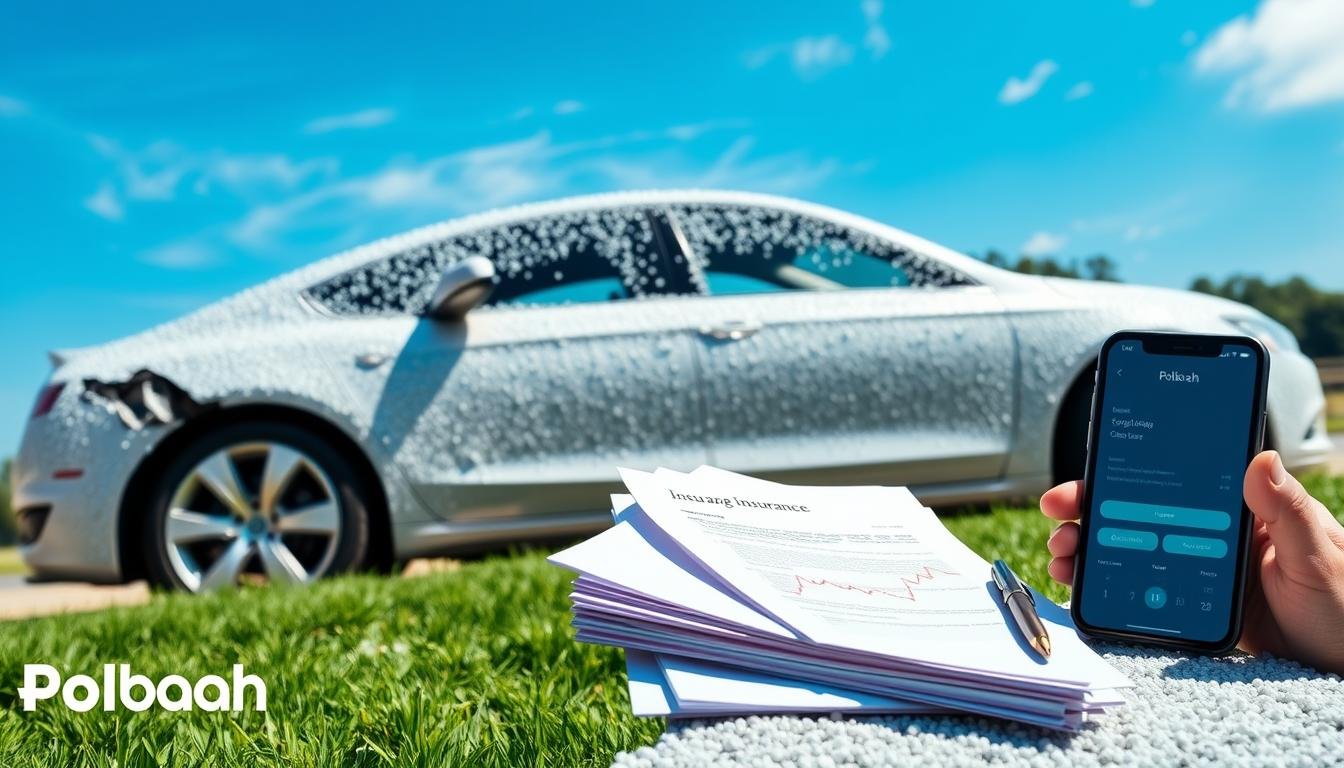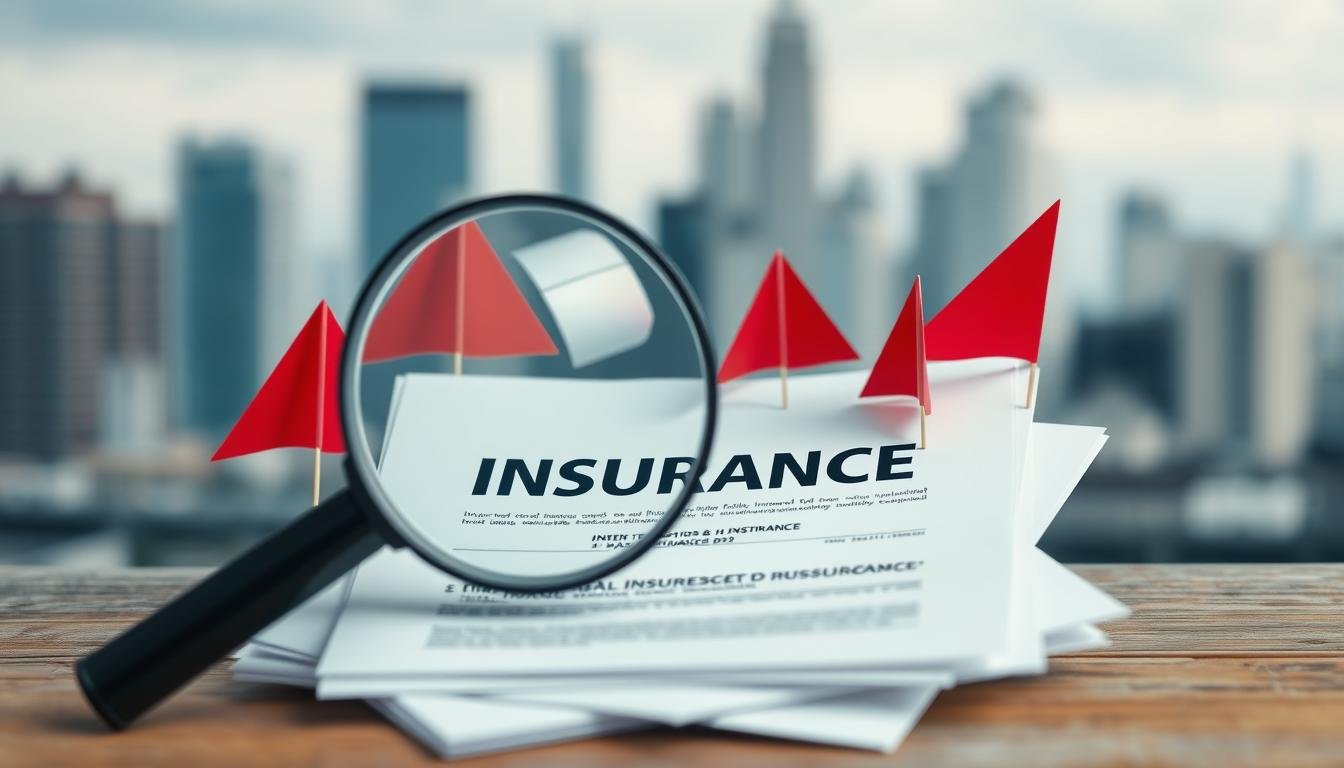Understanding auto insurance is key. This guide helps you grasp coverage, deductibles, and premiums. It’s packed with insights to help you make smart choices.
You’ll learn about basic concepts, types of coverage, and what affects your premiums. Plus, get tips on finding affordable insurance. With this knowledge, you’ll feel confident in your auto insurance choices.
Key Takeaways
- Understanding auto insurance begins with knowing what coverage options are available.
- Deductibles play a key role in determining your out-of-pocket expenses.
- Factors like driving history and vehicle type influence auto insurance premiums.
- Comparing quotes from different insurers can help you find the best rates.
- Being aware of discounts may lead to additional savings on your premiums.
Understanding Auto Insurance Basics
Auto insurance is a key financial safety net. It’s a contract between you and an insurer. It protects you from various risks related to your vehicle.
What is Auto Insurance?
Auto insurance covers costs from damages to your vehicle or liability for damages to others. It includes liability, collision, and comprehensive options. These coverages protect you financially in accidents, theft, or other unexpected events.
Knowing the basics of auto insurance helps you make smart choices. It’s crucial for responsible vehicle ownership.
The Importance of Auto Insurance
Auto insurance is vital for several reasons. It protects your finances by covering repair and medical costs from accidents. Many states require a minimum amount of insurance, making it legal.
Having a comprehensive policy gives you peace of mind. It ensures you’re financially safe from unexpected events. Understanding auto insurance is more than just following the law; it’s a responsible step for vehicle owners.

Navigating Auto Insurance: A Complete Guide to Coverage, Deductibles, and Premiums
Understanding auto insurance starts with knowing how coverage, deductibles, and premiums work together. Coverage is the core of your policy, showing what’s protected and when. Knowing your coverage options helps you customize your policy to fit your needs.
Deductibles are key in how much you pay before insurance helps. Choosing the right deductible is a trade-off. Higher deductibles mean lower premiums but more cost if you need to file a claim. It’s important to understand this balance to get the most from your policy.
Premiums are what you pay for your insurance. They depend on your driving record, the car you drive, and how much coverage you choose. This guide helps you compare policies and find the best one for your budget. It covers all you need to know to make smart choices about your auto insurance.
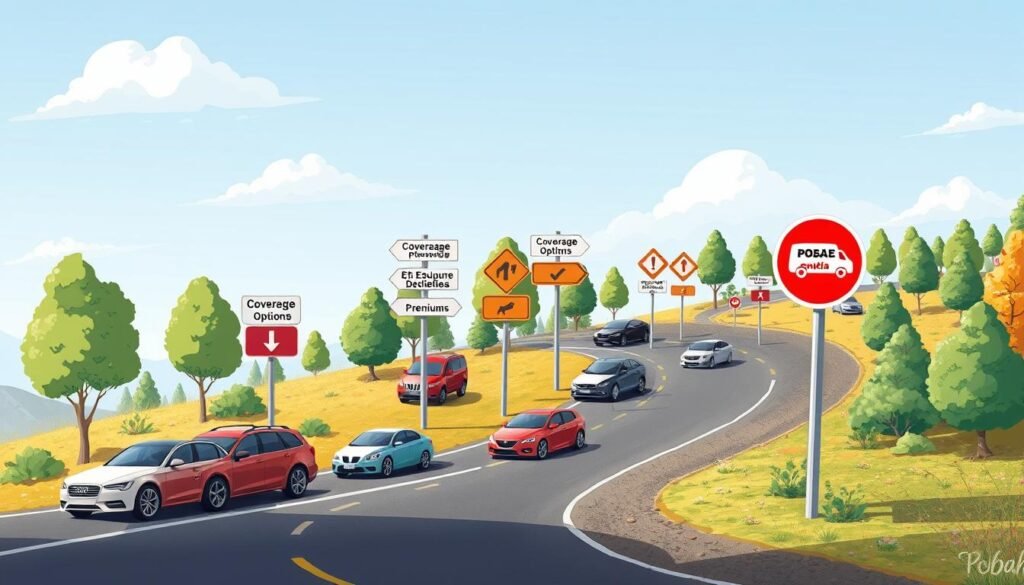
Types of Auto Insurance Coverage
Knowing about the different auto insurance coverages helps you pick the right one for you. Each type protects against various risks of owning a vehicle. Here’s a look at the key coverage options you should think about.
Liability Coverage Explained
Liability coverage helps if you cause an accident that hurts someone or damages their stuff. It covers medical bills, lost wages, and repairs. Every state requires a certain amount of liability coverage.
Figuring out how much you need is key to financial security. Knowing the details of your liability coverage is important when looking at your auto insurance.
Comprehensive and Collision Coverage
Comprehensive coverage pays for damage not from a crash, like theft or natural disasters. Collision coverage covers damages from accidents, no matter who’s at fault. These two coverages protect your vehicle well.
Many drivers choose both comprehensive and collision coverage for the best protection.
Uninsured and Underinsured Motorist Coverage
This coverage protects you if you hit someone who doesn’t have insurance or has too little. It ensures you’re financially safe, even if the other driver isn’t. Knowing about this coverage is important, as it’s often missed when picking insurance.
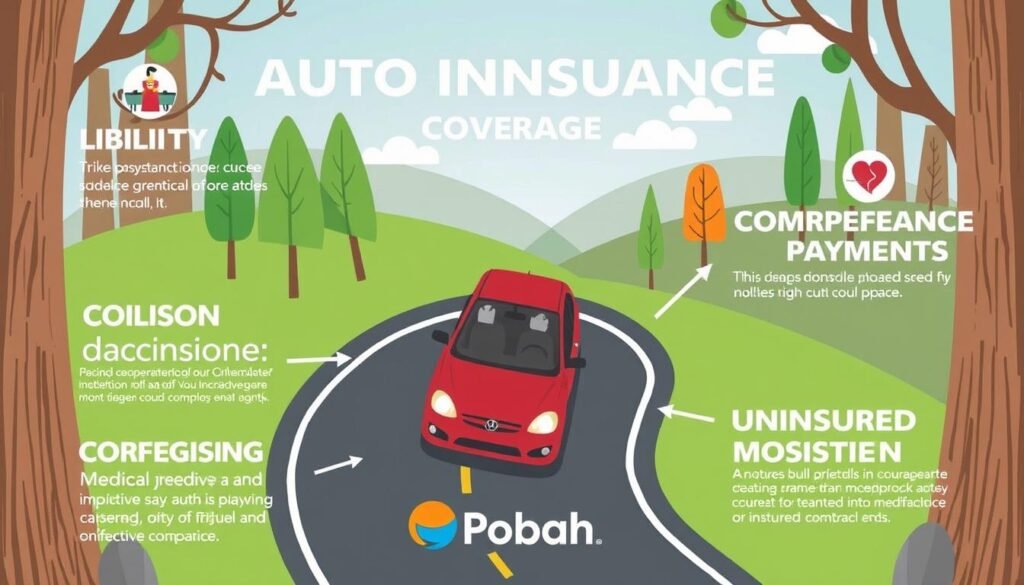
How Auto Insurance Premiums Work
It’s important to know how auto insurance premiums work to manage your costs. Many factors can change how much you pay for coverage. Learning about these can help you make better choices for your auto insurance.
Factors Influencing Premium Costs
Several key factors affect your auto insurance premiums. These include:
- Driving History: A clean driving record with few or no claims usually results in lower premium costs.
- Location: Urban areas tend to have higher rates due to increased risks like theft and accidents.
- Type of Vehicle: High-performance or luxury cars often attract higher premiums.
- Credit Score: Insurers often consider credit ratings, with higher scores typically leading to lower rates.
Understanding Premium Payments
Auto insurance premiums come with different payment options. You can pay annually, semi-annually, or monthly, based on your financial situation. Often, paying annually can lower your costs.
It’s also key to understand deductibles and premiums. Higher deductibles mean lower premiums but more out-of-pocket costs for claims.

Auto Insurance Deductibles Overview
Understanding auto insurance deductibles is key to managing your insurance costs. A deductible is the amount you must pay before your insurance kicks in. Knowing this can help with your financial planning if you have an accident or damage to your vehicle.
What is a Deductible?
A deductible acts as a first line of defense against minor claims. For example, if you have a $500 deductible and your damages are $2,000, you pay the first $500. The insurance company then covers the rest, $1,500. Knowing how deductibles work helps you understand your financial role in case of an accident.
Choosing the Right Deductible for You
Choosing the right deductible is about balancing costs and benefits. A higher deductible means lower monthly payments but more out-of-pocket costs for claims. On the other hand, a lower deductible increases your premiums but reduces your financial burden when filing claims.
- Evaluate your financial situation: Think about your savings and if you can handle a higher deductible.
- Assess your risk tolerance: Consider your driving habits and how likely you are to need to file a claim.
- Calculate your potential costs: Use a calculator to see how different deductibles affect your expenses.
This overview aims to help you make smart choices about auto insurance deductibles. Remember, the right choice can save you time and money in the long run.
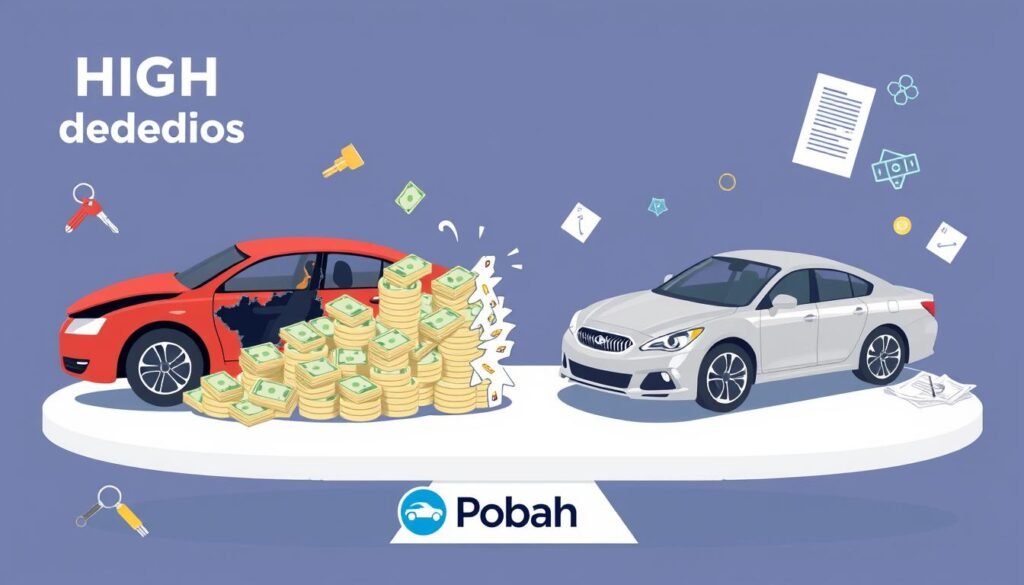
Finding Affordable Auto Insurance Options
Looking for affordable auto insurance? Start by comparing quotes from different companies. This way, you can find the best deal for your needs.
Comparing Quotes from Different Insurers
Get quotes from several insurance providers. Each company offers different rates and coverage. This lets you choose the most affordable option for you.
Understanding Discounts and Savings Tips
Insurance companies offer many discounts to lower your premium. Here are some common ones:
- Multi-policy discount: Getting auto and homeowners or renters insurance together can save you a lot.
- Safe driver discount: Driving safely can lower your premiums.
- Student discount: Good grades can get you extra savings if you’re a student.
Using these tips can help you save money while still getting good coverage. By looking for affordable options and using discounts, you make smart choices for your auto insurance.
Best Auto Insurance Coverage Options
Choosing the right auto insurance is all about knowing what you need. Different drivers have different needs based on how they drive, their car, and where they live. It’s important to look at what each policy offers and match it to your situation for the best protection.
Evaluating Coverage based on Your Needs
To pick the right coverage, think about these things:
- Driving Frequency: If you drive a lot, you might want higher liability limits.
- Type of Vehicle: Cars that are new or expensive often need comprehensive coverage.
- Urban vs. Rural: Drivers in cities might need more coverage because of higher accident risks.
Top Providers in the Market
Many insurance companies offer great coverage. Here are some top ones:
- Geico: They have good rates and useful online tools.
- State Farm: They offer personalized service and lots of local agent support.
- Progressive: They have flexible coverage and are known for great customer service.
Tips for Choosing the Right Auto Insurance
Choosing the right auto insurance starts with knowing what you need. Think about your car’s value, your money situation, and how you drive. Knowing what coverage is right for you can save you money and protect your assets.
By picking the right levels of liability, collision, and comprehensive coverage, you can create a policy that fits you. This way, you get the coverage you need without paying too much.
Assessing Your Coverage Needs
After figuring out what you need, it’s important to look at policy details closely. Make sure you understand each part of your policy. Many people miss important details that can affect their claims later.
Some policies have special rules that limit what they cover. Being clear about these can help you avoid problems. Getting advice from experts and hearing from others who have insurance can also help.
Reading Policy Details Carefully
If you’re not sure about something, ask your insurance agent. They can help you understand any confusing parts. Making informed choices is important for managing risks, especially with cars changing all the time.
Also, check your policy often. What’s good for you one year might not be the next. By keeping up with changes, you make sure you’re always protected.
FAQ
What is the purpose of auto insurance?
Auto insurance protects your finances in case of accidents, theft, or damage. It’s key for keeping your money safe and is often required by law.
How do I determine the best auto insurance coverage for my needs?
To find the right coverage, think about your driving habits, vehicle, and finances. Look at liability, comprehensive, and collision coverage to see what fits you best.
What factors influence my auto insurance premiums?
Your driving record, credit score, location, and vehicle type can change your premiums. A clean driving record can lower your costs.
What is an auto insurance deductible?
A deductible is what you pay first before insurance helps with a claim. A higher deductible means lower premiums but more costs in an accident.
How can I find affordable auto insurance options?
Compare quotes, look for discounts, and check your coverage needs. Discounts for safe driving or multiple policies can cut your costs.
What types of discounts can I get on my auto insurance?
You might get discounts for safe driving, having multiple policies, being a good student, or driving less. Each company offers different savings, so ask about them.
How do I compare quotes from different auto insurance companies?
Make sure the coverage and deductibles are the same. Consider the total cost, customer service, and any extra benefits each company offers.
Can I switch my auto insurance provider?
Yes, you can switch at any time. Review your policy and avoid gaps in coverage. Get your new policy ready before canceling the old one.
What should I look for when reading my auto insurance policy?
Check coverage limits, what’s not covered, deductibles, and claim conditions. Understanding all parts can prevent surprises when you need to make a claim.
